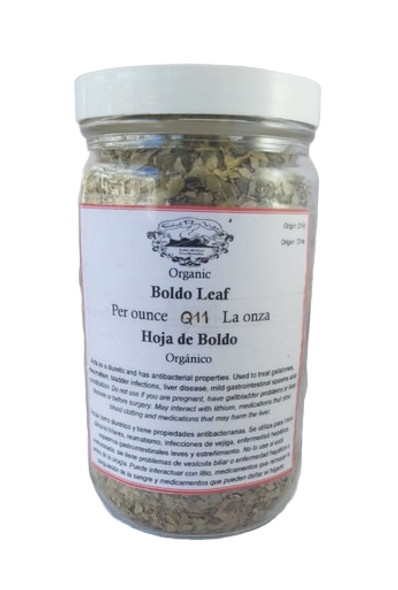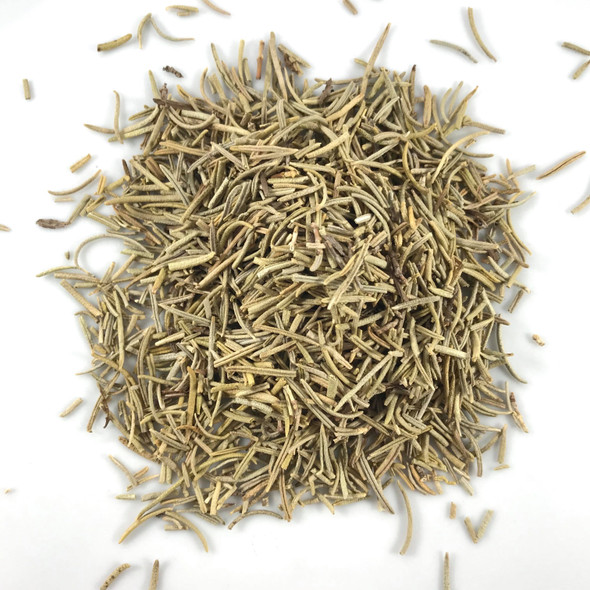Price Per Ounce / Precio Cada Onza
Calendula Flower Petals, Organic - Hojas de Calendula, Organico
- SKU:
- SPV-0255
Description
Calendula has been used an herbal remedy and as coloring and flavoring for food in Central and Southern Europe since the 1100s. Commonly known there as marigold, calendula is an annual flower native to the northern Mediterranean countries. It's well known for its skin-soothing properties — this gentle herb is used as an ingredient in all types of skin care preparations, including salves, body washes, creams, ointments and lotions. This two-foot-tall, hardy annual can grow quite bushy, and its large, two- to three-inch flowers (which range from yellow to bright orange in color) are attractive additions to borders. Calendula blooms continuously throughout the winter in warmer climates and throughout the summer in the north. Cooler temperatures and picking the flowers promotes more flowering, while high heat in summer will stress the plant and stop flowering
- Though often called marigold, our calendula (Calendula officinalis L.) should not be confused with garden marigold (of the Tagetes genus).
- The flowers open in the morning and close in the late afternoon; they are of the highest quality when harvested in the morning after the dew has dried.
- The flowers fade quickly when exposed to light and readily absorb moisture, so they should be stored in a dark, airtight container.
- Calendula was named the 2008 International Herb Association Plant of the year, being outstanding in all three categories: medicinal, culinary and decorative.
Directions
For tea, pour 1 cup boiling water over 1 tsp. of calendula, cover and steep 3 to 5 minutes. Strain, serve immediately and enjoy. To make calendula skin care oil, place one cup of calendula flower petals in a non-reactive container such as a glass jar. Cover with one cup of a high quality oil such as extra-virgin olive oil or almond oil, stir well, adding more oil if needed to keep the calendula completely submerged. Stir daily. When the oil takes on the color and aroma of the calendula (about a week), strain out all of the flowers, squeezing them well to remove as much of the oil as possible. Place in a glass jar and let stand for a few days to let any sediment remaining fall to the bottom of the jar. Draw oil off the sediment and store in a tightly sealed glass container. Keep in a cool, dark place. Use the oil as a massage, skin care oil or as a base for salves. Adding a little vitamin E to the finished calendula flower oil will help increase its shelf life.
__________________________________________________________________________________________________________________________________________________________________________________________________________________
La caléndula se ha utilizado como remedio herbal y como colorante y saborizante de alimentos en Europa Central y del Sur desde el siglo XII. Comúnmente conocida allí como caléndula, la caléndula es una flor anual nativa de los países del norte del Mediterráneo. Es bien conocida por sus propiedades calmantes para la piel - esta suave hierba se utiliza como ingrediente en todo tipo de preparaciones para el cuidado de la piel, incluyendo bálsamos, lavados corporales, cremas, ungüentos y lociones. Esta planta anual resistente de dos pies de altura puede crecer bastante tupida, y sus grandes flores de dos a tres pulgadas (que van de amarillo a naranja brillante) son atractivas adiciones a los bordes. La caléndula florece continuamente durante el invierno en climas más cálidos y durante el verano en el norte. Las temperaturas más frías y la recolección de las flores promueve una mayor floración, mientras que el calor intenso del verano estresará la planta y dejará de florecer
Aunque a menudo se le llama caléndula, nuestra caléndula (Calendula officinalis L.) no debe confundirse con la caléndula de jardín (del género Tagetes).
Las flores se abren por la mañana y se cierran al final de la tarde; son de la mejor calidad cuando se cosechan por la mañana después de que el rocío se haya secado.
Las flores se desvanecen rápidamente cuando se exponen a la luz y absorben fácilmente la humedad, por lo que deben almacenarse en un contenedor oscuro y hermético.
La caléndula fue nombrada planta del año 2008 por la Asociación Internacional de Hierbas, destacándose en las tres categorías: medicinal, culinaria y decorativa.
Direcciones
Para el té, vierta una taza de agua hirviendo sobre una cucharadita de caléndula, cúbrala y déjela reposar de 3 a 5 minutos. Colar, servir inmediatamente y disfrutar. Para hacer aceite de cuidado de la piel de caléndula, coloque una taza de pétalos de flor de caléndula en un recipiente no reactivo como un frasco de vidrio. Cubra con una taza de un aceite de alta calidad como el aceite de oliva extra virgen o el aceite de almendras, revuelva bien, añadiendo más aceite si es necesario para mantener la caléndula completamente sumergida. Revuelva diariamente. Cuando el aceite adquiera el color y el aroma de la caléndula (alrededor de una semana), cuele todas las flores, exprimiéndolas bien para extraer la mayor cantidad de aceite posible. Colóquelas en un frasco de cristal y déjelas reposar unos días para que los sedimentos que queden caigan al fondo del frasco. Saque el aceite del sedimento y guárdelo en un recipiente de vidrio bien cerrado. Manténgalo en un lugar fresco y oscuro. Utilice el aceite para masajes, para el cuidado de la piel o como base para ungüentos. Añadir un poco de vitamina E al aceite de flor de caléndula terminado ayudará a aumentar su vida útil.






